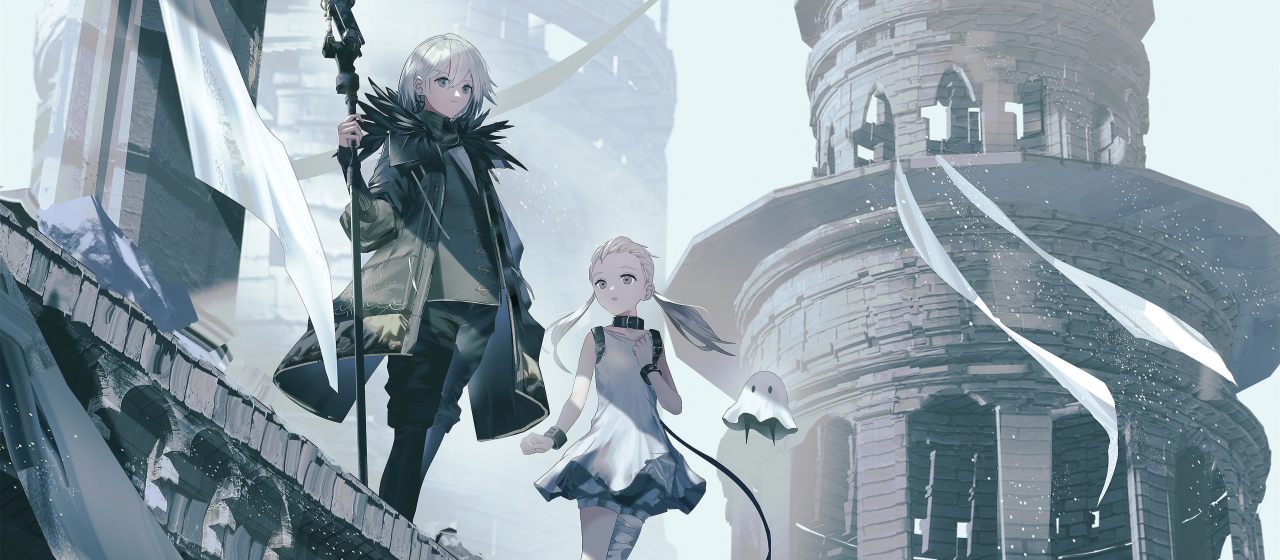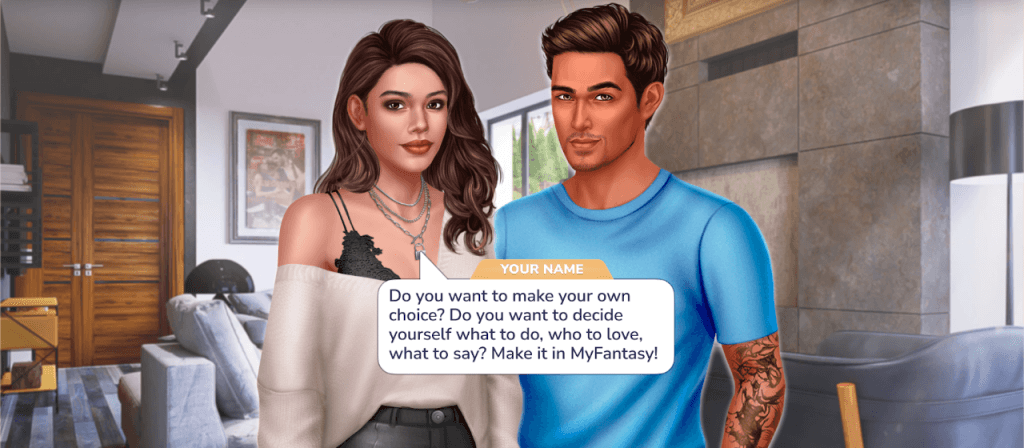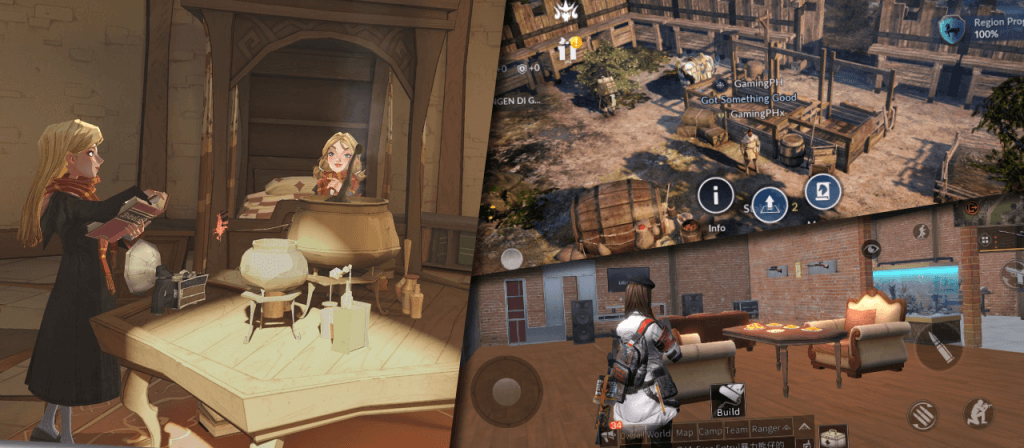Every now and then, we come across mobile games that do things differently from the rest in some aspect of the game. In the case of NieR Re[in]carnation, that aspect has been the storytelling. Even though the game has been having only modest success in the US and Japan, we wanted to showcase the peculiar narrative elements of the game as they deserve to be shared.
In order to discuss some of these narrative aspects, some story twists are going to be spoiled. If you don’t want to be spoiled on this specific game, please play through the first 12 chapters of the game yourself.
Editor’s note: Around Christmas, NieR Re[in]carnation added an update that included a new story set. That set of stories is not covered in this post, but you can check the recent update in our service if you’re interested to know more.
What is NieR Re[in]carnation?
NieR Re[in]carnation is a mobile game related to the world of console games NieR Automata and NieR Replicant, although, at this point, it is not yet clear exactly how. The storytelling in the series as a whole is known for darker and tragic fates. The games also experiment on a variety of gameplay styles as the hack-and-slash gameplay can suddenly turn to Bullet Hell, text-based game, or sidescroller. The series has recognizable music that is appreciated by many.
Before moving on to the storytelling part, let’s first take a look at the features of the game to get a basic understanding of the game as a whole.
Core
The battles in NieR Re[in]carnation are done in a 3D space with Auto-battle mechanics. Characters keep on randomly attacking enemies with their basic attacks. Players can make an enemy a focused target by tapping them or their 2D image above their HP. There are two weapon skills, one character skill, and up to three companion skills available to be used. Each of them has its cooldown timers, but companion skills can only be used once per battle for each companion. Auto-battle can be activated to remove the need for manual skill use. As a gimmick, players can move their main character around on the battlefield, but it only has a cosmetic effect.
![Core gameplay in NieR Re[in]carnation](https://www.gamerefinery.com/wp-content/uploads/2021/12/nier-reincarnation-core-gameplay.png)
Meta
The player collects and develops characters like in any RPG. Here, however, there are only a handful of people as the new characters are usually the same old characters with different costumes and skills. Each character can have their levels and skills upgraded individually for that specific person. A person can also have their stats boosted through all costume variations on a “skill tree” like attribute increasing system called Mythic Slab.
Players can also collect plenty of equipment items. There are weapons, companions, and memoirs to collect, with each type having its own upgrade materials and methods.
Exploration
Storytelling is not necessarily the only aspect that makes NieR Re[in]carnation stand out from the crowd. Usually, mobile RPGs tend to have you be either in the menus or in the battles. This game deviates from that pattern by having players traverse through the location called The Cage as players progress in the story.
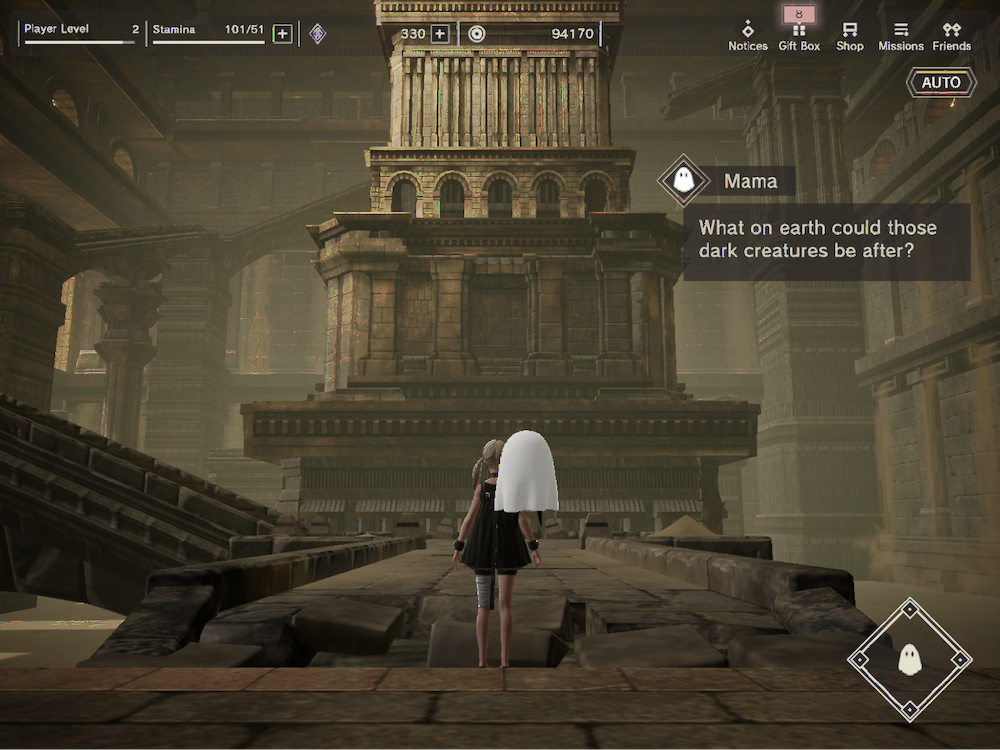
This covers the basics of the game. If you want to take a closer look at, e.g., monetization mechanics or First Time User Experience, check out our analysis in the GameRefinery service. Let’s now move on to the main topic.
Storytelling in NieR Re[in]carnation
In general, the storytelling in mobile games tends to be very dialogue-heavy. Characters are shown in their 2D artwork, and a box of text under them shows their lines. In the bit more expensive productions, voice actors interpret the lines for those playing their games sound on.
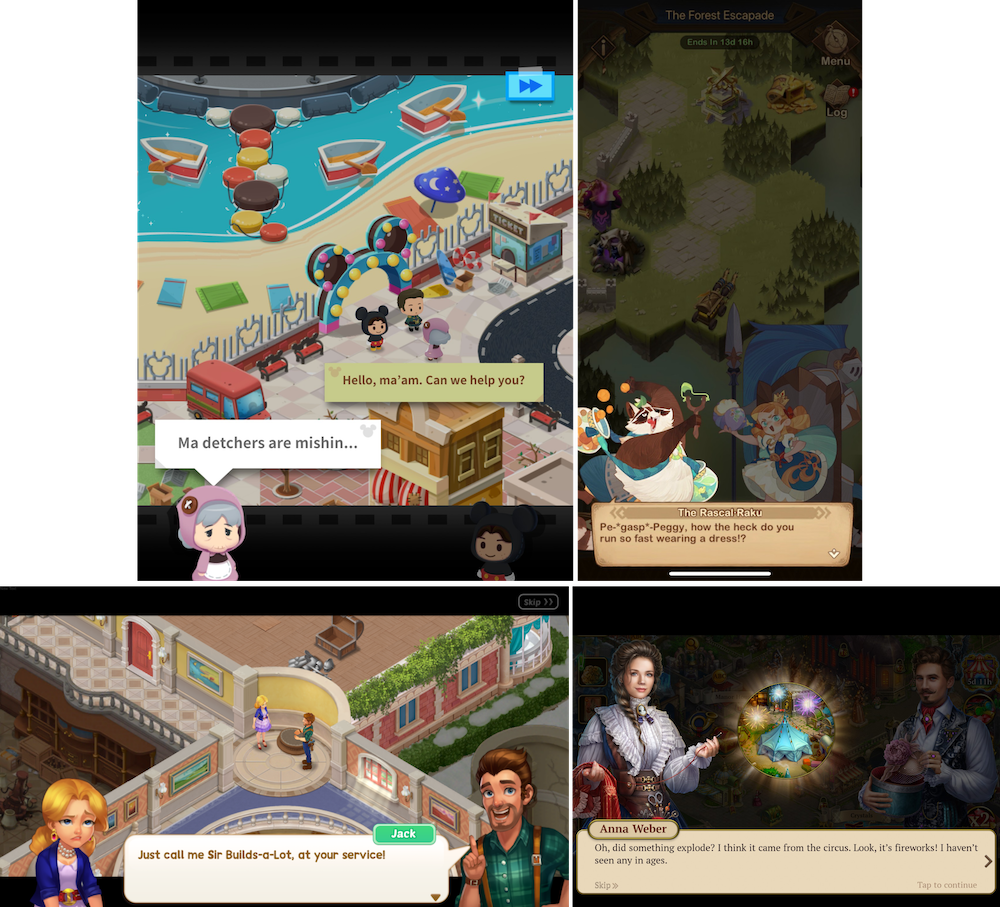
Entering a weapon
NieR Re[in]carnation does things a little bit differently. In the game, you enter inside weapons to live through the weapons’ previous owners’ stories. You transition from the 3D world into a storybook-like 2D, and instead of controlling the character you use in the exploration, you control the weapon’s previous owner. The story is narrated with that character’s voice but in the third person. It essentially feels like you are listening to an audiobook.
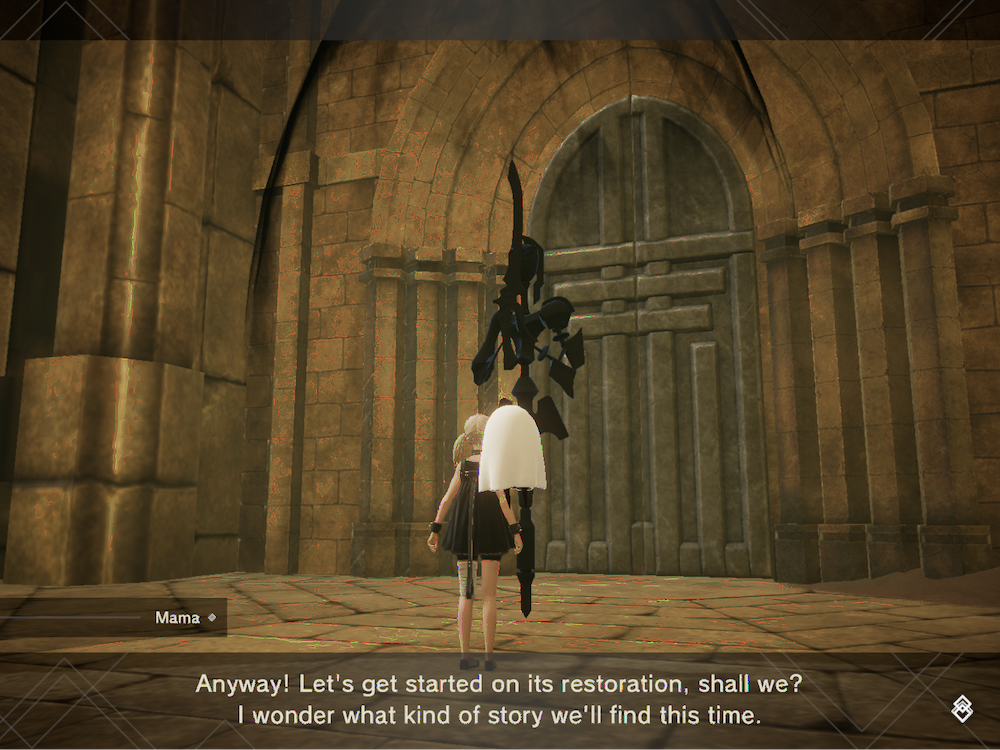
Sometimes the game adds twists to just running around in the 2D story by adding simple puzzles or mixing core gameplay elements to it. At the most gruesome bits, the player has to make a choice before the story progresses.
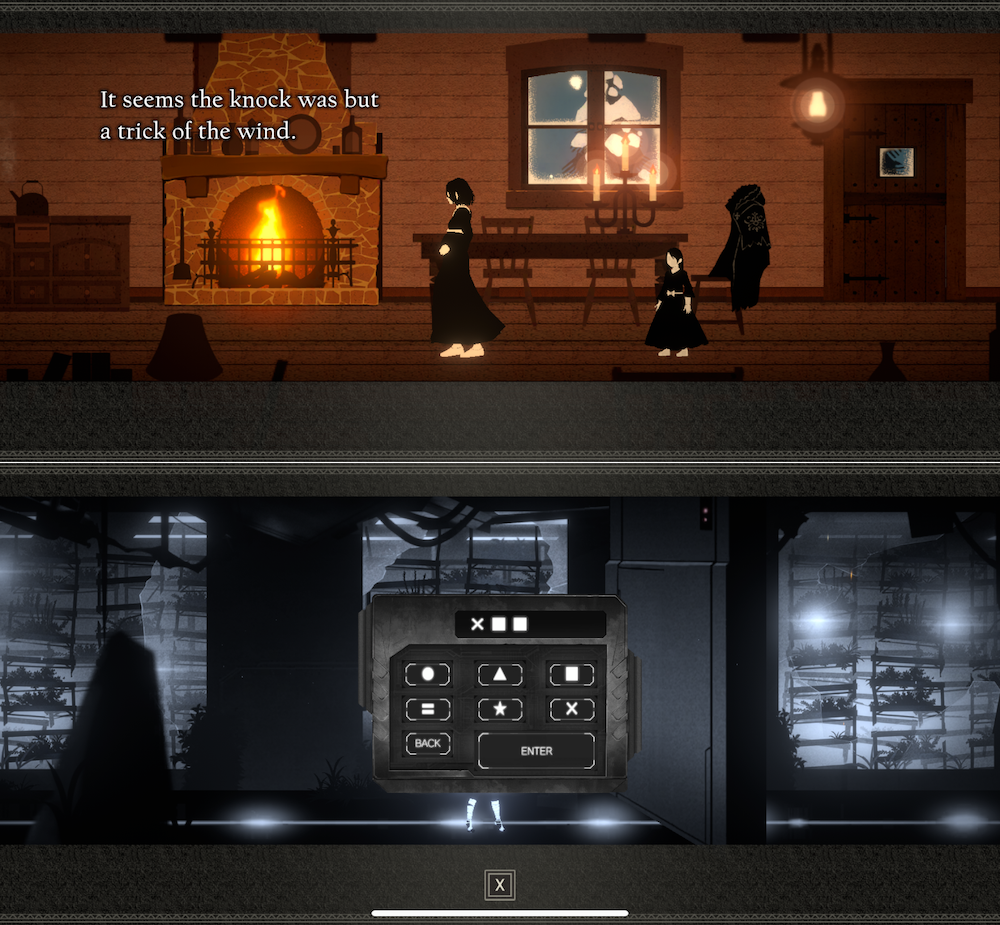
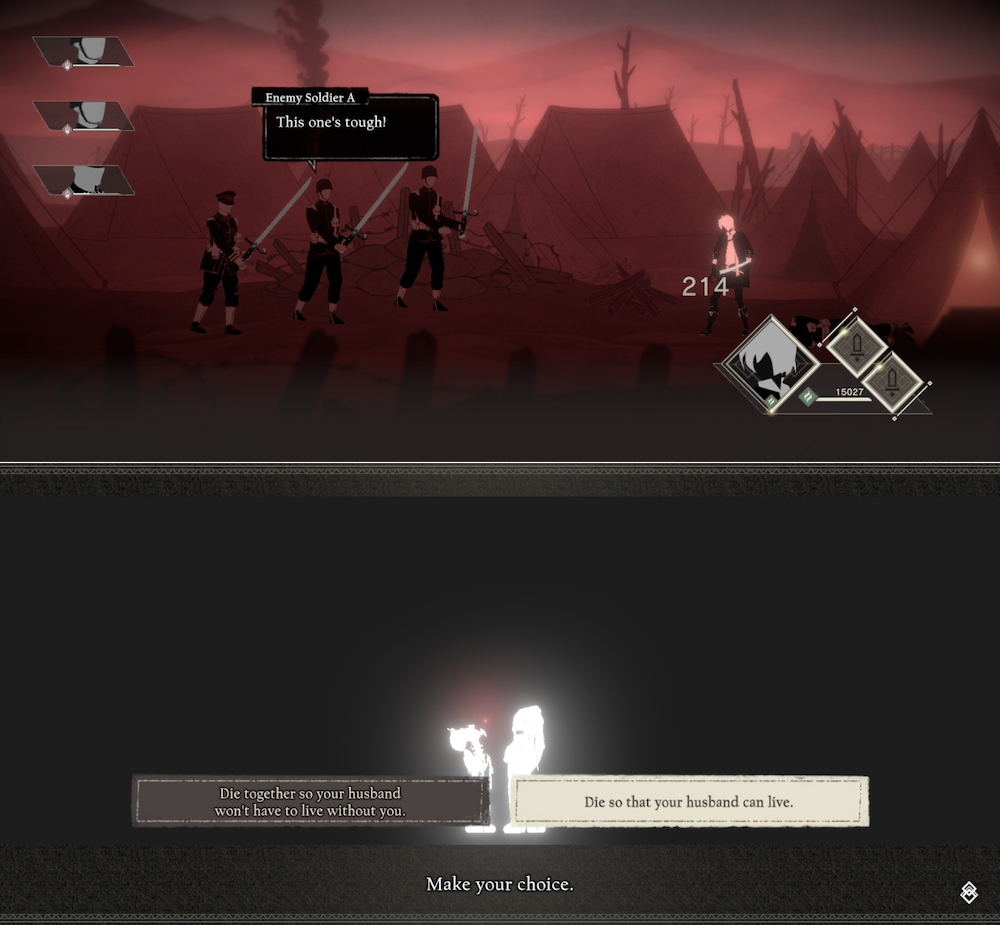
Character quests
As the player keeps using the specific person enough, they unlock character quests. As those quests are cleared, additional stories about the person’s life can be viewed. The player can move in them but only to search and tap blackbirds that activate storytelling sequences.
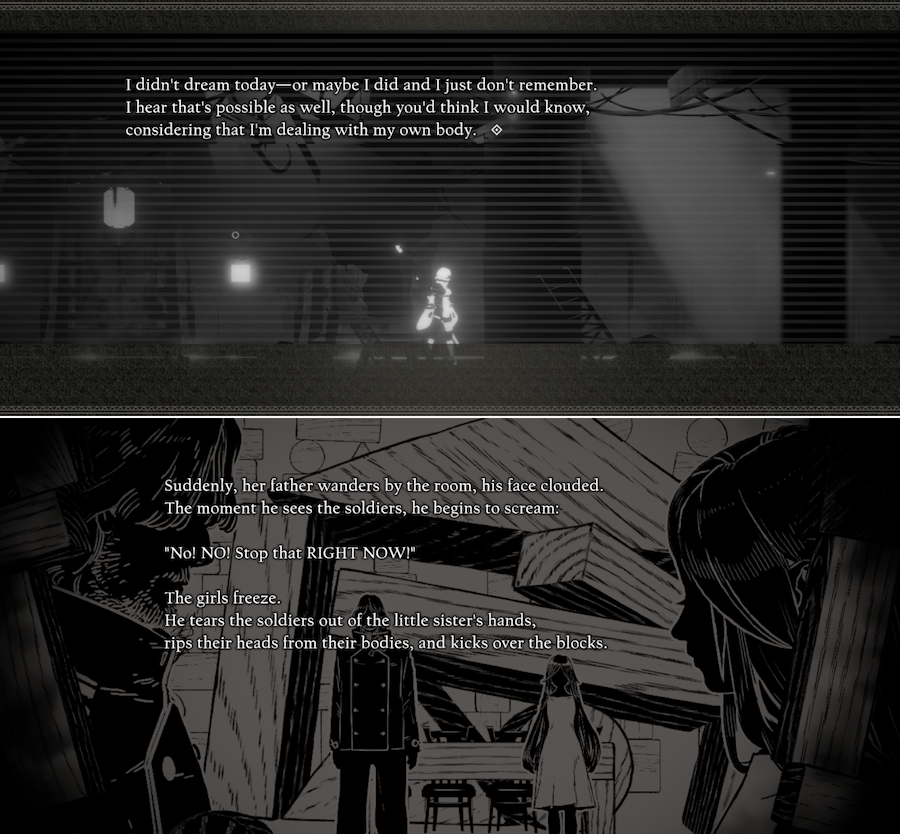
Each person also has an EX version of them, which unlocks an additional story for the person. EX characters are the strongest version of the person and are only available through extensive grinding of special quests. These quests have a very low rate of dropping special material items that are needed to upgrade the weapon. Fully upgrading the weapon unlocks the character for players use. The EX Story is unlocked little by little as the weapon is upgraded with the final part being available after the weapon is maxed.
The EX stories lack the interactive element. The backgrounds feature stylized black and white scenes from the story as text appears, and the character’s voice reads in third person how the story plays out.
Main storyline
While weapon-based storytelling goes on in the 2D world, the 3D exploration is telling another one. For the first 12 chapters, the story follows a young girl Fio and a black insect-like creature Levania. For the first half, the player controls a girl running up The Cage. Halfway through, the main character seemingly changes as the player gets to experience what happened before. This is done by making the same trip in the opposite direction while controlling Levania. It later turns out creatures like Levania eat dreams of humans to become humans. What they don’t know is that they essentially switch bodies with the human whose dreams they eat. So for the first half, the player was also controlling Levania, who had become Fio while she became a black insect-like monster. The two had become friends, so this surprise twist was not to Levanias liking. He manages to reverse the change, and both return to their own bodies.
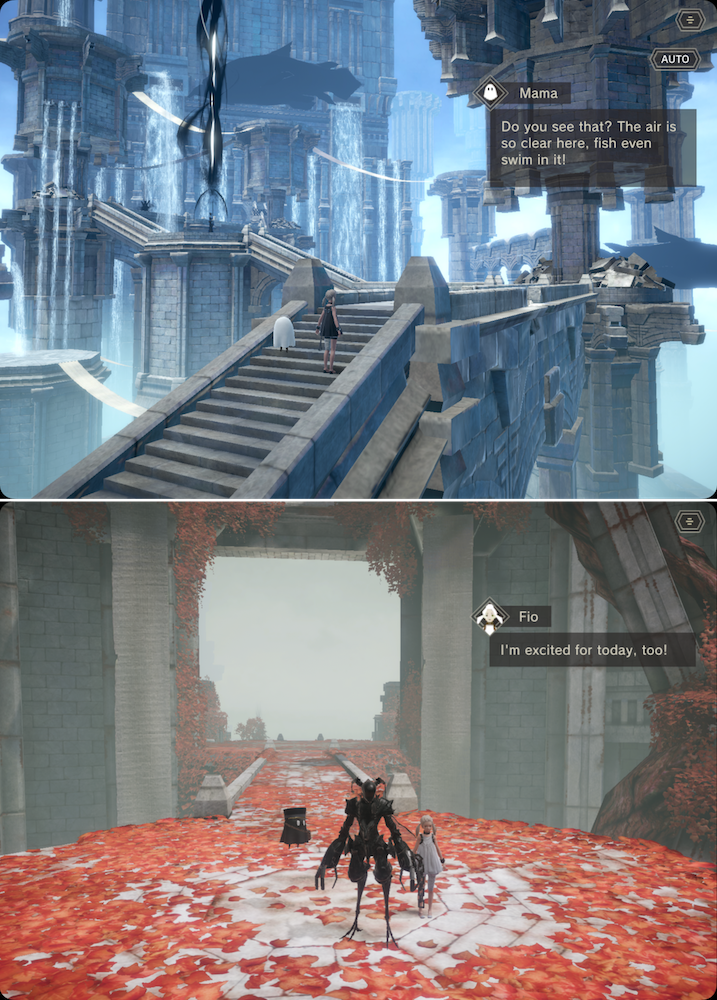
NieR Re[in]carnation is set to continue from chapter 13 onwards with two different characters themed with Sun and Moon. In other words, the main characters will be completely different from that point onward.
As mobile games tend to keep on going year after year, at some point, writing a story for the same character can be difficult. Switching the playable character as the story progresses is a nice way to keep things fresh. As another example, The Alchemist Code game also does this nicely by completely switching to a whole different character in a different setting to lead the story that later connects with the earlier bits.
Equipment items
Moving on to more minor storytelling elements. The different equipment items in the game also hold stories that lore-hungry players can digest. These are easy to ignore entirely but can be interesting to some, especially in terms of collaboration content.
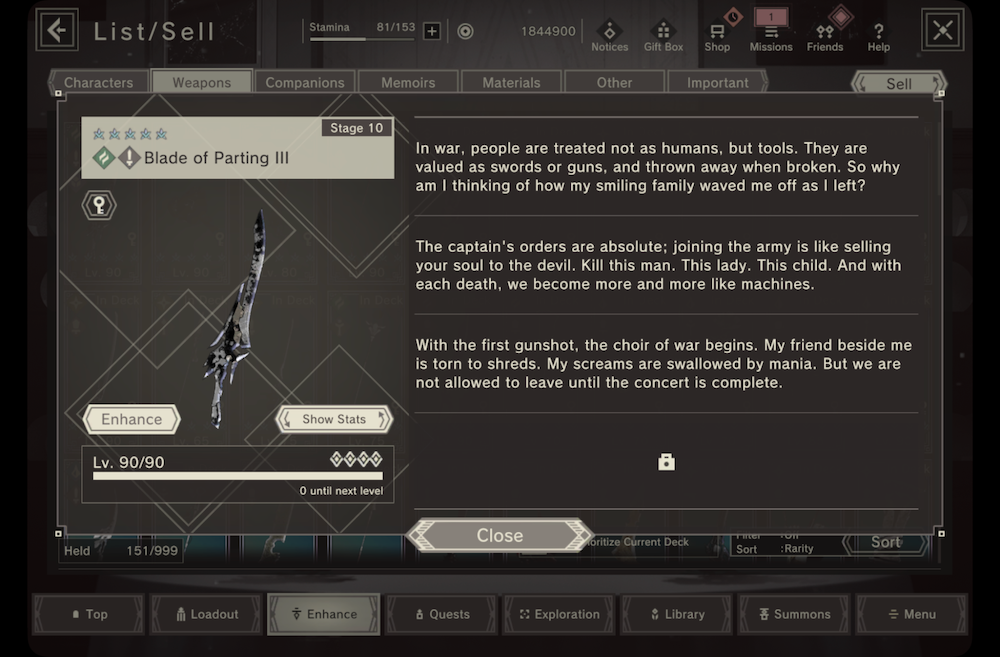
Weapons hold the story in four lockable pieces. The first is available instantly, while the other three are unlocked by upgrading the weapons. These stories don’t relate to the characters that the player knows but give an idea of the world of NieR.
Companions have their stories written in full in a couple of paragraphs on their info screen.
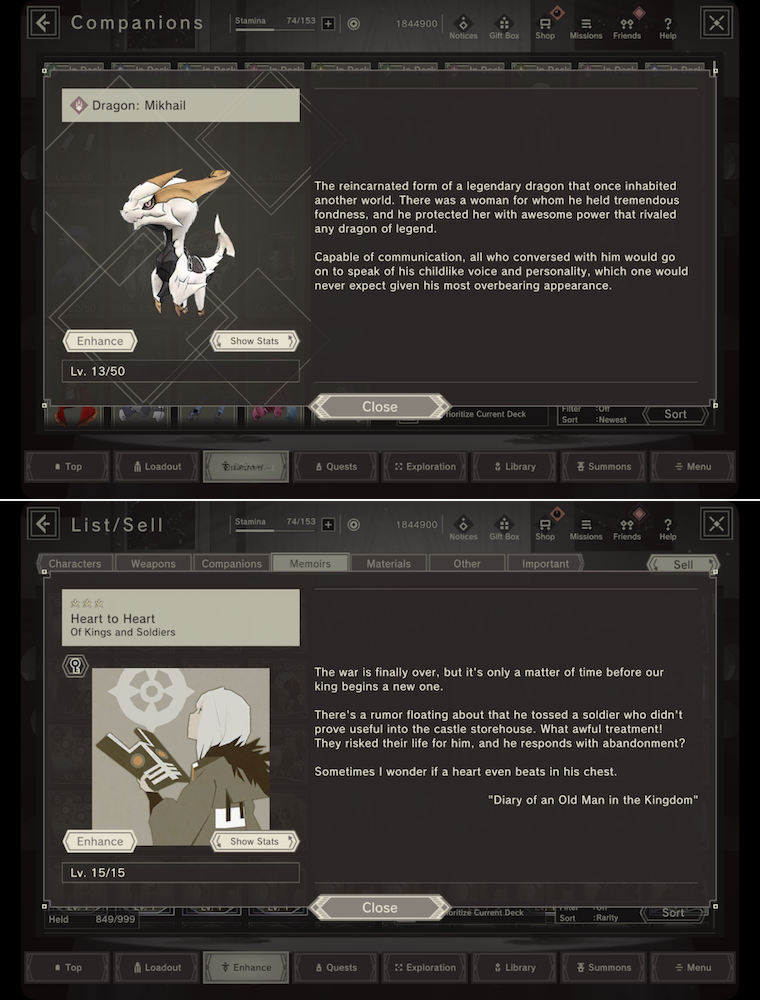
Memoirs have their stories told the same way as Companions but with an additional simple visual twist. Each Memoir represents a point in some character’s life that can shed further light on their history. This is shown in the Memoir icon. Some Memoirs can also have Easter Eggs. For example, Heart to Heart Memoir has a character from NieR Re[in]carnation holding a King’s mask from NieR Replicant.
To wrap it up
NieR Re[in]carnation has a fresh take on storytelling on mobile games. With many layers of stories going on and 12 people (+ 8 collaboration ones) being used repeatedly, players can get really invested in their stories. The third-person narration of the events can also suck you in as if you are listening to an audiobook. The game is definitely worth checking out for those wanting to expand their views on mobile game narrative.
If you enjoyed reading this post, here are a few more you should definitely check out:

